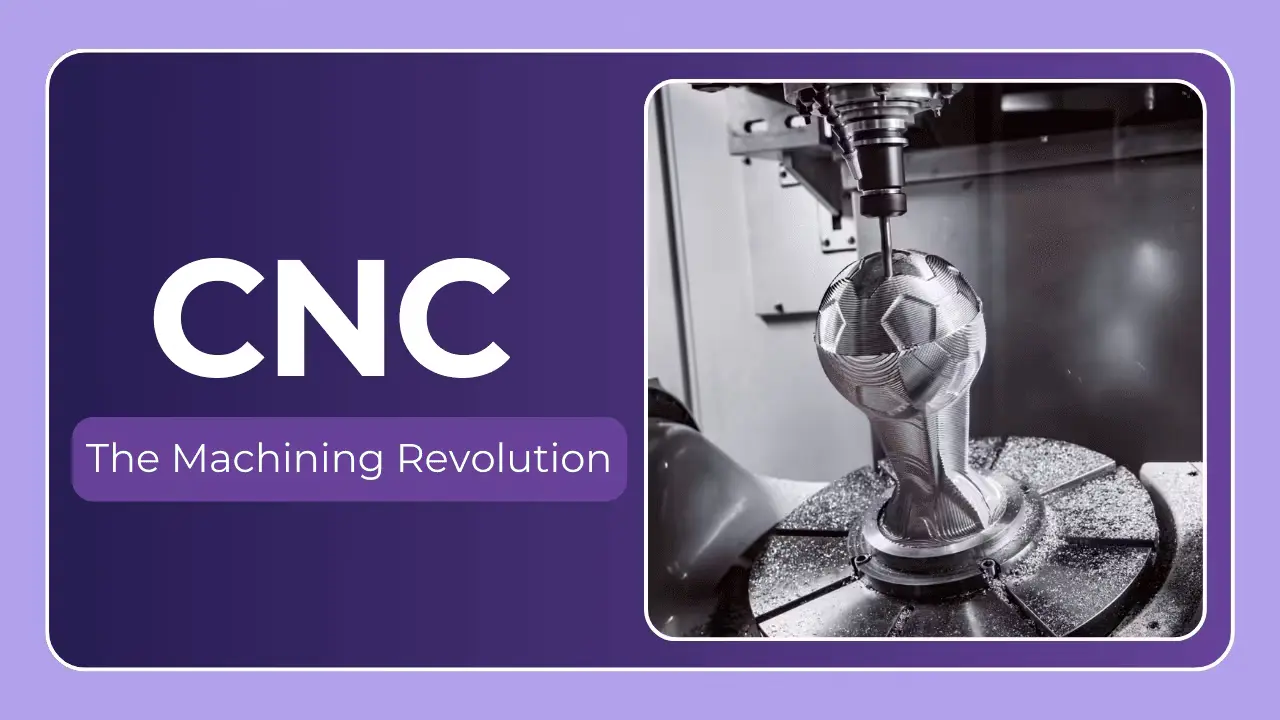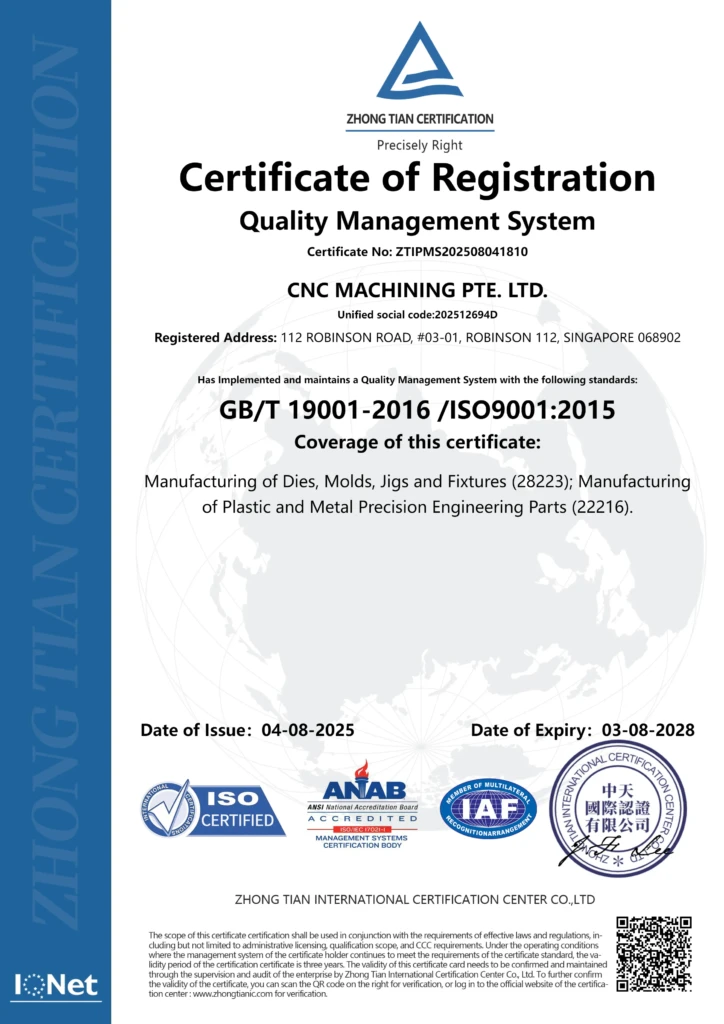Navigating the World of CNC Metal Machining: A Comprehensive Guide
In today’s manufacturing landscape, precision, speed, and repeatability are paramount. Computer Numerical Control (CNC) machining has emerged as the cornerstone of modern metal fabrication, offering unparalleled capabilities for creating complex parts with exacting tolerances. But understanding the nuances of CNC machining can feel daunting. This guide aims to demystify the process, covering everything from the foundations of the technology to material considerations, machining processes, design for manufacturability (DFM), and finishing options. We’ll also touch upon emerging trends and how to choose the right partner for your project – with a special nod to the advanced capabilities available from specialized manufacturers like CNC MACHINING PTE. LTD, a leading five-axis CNC machining provider in Singapore.
What is CNC Machining? A Foundation
At its core, CNC machining automates the material removal process using programmed computer instructions. Unlike traditional machining which requires a skilled operator to manually control cutting tools, CNC machines rely on pre-programmed G-code. G-code dictates every movement of the cutting tool, enabling consistent and accurate results.
Here’s a breakdown of the key components:
- CAD (Computer-Aided Design): This is where the part is digitally designed, often using software like SolidWorks, Fusion 360, or AutoCAD. The design creates the blueprint for the machining process.
- CAM (Computer-Aided Manufacturing): The CAM software translates the CAD design into G-code. It determines the optimal toolpaths, cutting speeds, and feeds to efficiently machine the part.
- CNC Machine: The machine itself, equipped with a rotating spindle and multiple axes of movement, interprets the G-code and executes the cutting operations.
- Cutting Tools: A diverse range of tools, including end mills, drills, taps, and reamers, are used to remove material and shape the part.
Common CNC Machining Processes
Several CNC machining processes are available, each suited for different applications and geometries. Here’s an overview:
| Process | Description | Typical Applications | Advantages | Disadvantages |
|---|---|---|---|---|
| Milling | Rotary cutting tool removes material from a workpiece. | Complex shapes, pockets, slots, contours. | Versatility, wide range of materials | Relatively slower for deep cuts |
| Turning | Workpiece rotates while a cutting tool removes material. | Cylindrical parts, shafts, screws. | High precision, fast material removal | Limited to radially symmetrical parts |
| Drilling | Creates round holes in a workpiece. | Holes for fasteners, fluid passages. | Simple, efficient for hole creation | Limited to cylindrical shapes |
| Tapping | Creates internal threads in a hole. | Fasteners, threaded components. | Simple, efficient thread creation | Requires correct tap size and pitch |
| EDM (Electrical Discharge Machining) | Uses electrical sparks to erode material. | Hardened materials, complex internal features. | Can machine extremely hard materials | Slow process, can leave recast layer |
| Wire EDM | Uses a wire electrode to cut through material. | Intricate profiles, small holes. | High accuracy, minimal stress | Limited to 2D shapes |
| Five-Axis Machining | Simultaneous movement across five axes. | Complex geometries, undercuts, organic shapes. | Exceptional precision, reduced setups | Higher complexity and cost |
Material Selection: The Foundation of Success
The choice of material significantly impacts the machining process, tool life, and final part properties. Common metals machined via CNC include:
- Aluminum: Lightweight, corrosion-resistant, easily machinable. Great for aerospace, automotive, and general manufacturing. Alloys like 6061 and 7075 are widely used.
- Stainless Steel: Strong, corrosion-resistant, durable. Ideal for medical devices, food processing equipment, and marine applications. 304 and 316 are common grades.
- Steel Alloys: High strength, wear resistance. Used in tooling, gears, and high-stress components. 4140 and 1045 are common choices.
- Titanium: Exceptional strength-to-weight ratio, corrosion resistance. Employed in aerospace, medical implants, and high-performance applications.
- Brass & Copper: Excellent conductivity, machinability, corrosion resistance. Used in electrical components, plumbing fittings, and decorative elements.
Design for Manufacturability (DFM): Avoiding Costly Mistakes
DFM principles are crucial for optimizing parts for CNC machining. Consider these guidelines:
- Minimize Features: Reduce the number of complex features and tight tolerances where possible.
- Standard Tooling: Design parts that can be machined with standard cutting tools. Special tooling increases cost and lead time.
- Avoid Sharp Internal Corners: Sharp corners create stress concentrations and are difficult to machine accurately. Opt for radii or fillets.
- Consider Material Grain: Understanding the material’s grain structure helps optimize machining direction for strength and stability.
- Wall Thickness: Ensure sufficient wall thickness to avoid deflection during machining.
- Accessibility: Ensure all features are accessible to the cutting tools.
Post-Processing and Finishing: Adding the Final Touches
CNC machining often requires post-processing to achieve the desired surface finish, dimensional accuracy, or functional properties. Common options include:
- Deburring: Removing sharp edges and burrs left by the machining process.
- Polishing: Creating a smooth, reflective surface.
- Anodizing (Aluminum): Enhancing corrosion resistance and providing a decorative finish.
- Powder Coating: Applying a durable and visually appealing coating.
- Heat Treatment: Altering the material’s hardness, strength, and ductility.
- Surface Grinding: Achieving extremely tight tolerances and smooth surface finishes.
The Rise of Five-Axis Machining: Unlock Complex Geometries
Traditional three-axis CNC machining limits the types of parts that can be effectively manufactured. Five-axis machining significantly expands these capabilities by adding two additional axes of rotation.
Benefits of Five-Axis Machining:
- Complex Geometries: Ability to machine intricate shapes that are impossible with three-axis machines.
- Reduced Setups: Machining multiple sides of a part in a single setup reduces errors and improves accuracy.
- Shorter Cycle Times: Optimized toolpaths and reduced setups translate to faster machining times.
- Improved Surface Finish: Better tool access and control result in superior surface quality.
This is where a specialized manufacturer like CNC MACHINING PTE. LTD truly excels. They possess the advanced five-axis CNC equipment and expertise to tackle even the most challenging projects, delivering precision and efficiency.
Choosing the Right CNC Machining Partner
Selecting the right CNC machining partner is critical for success. Consider these factors:
- Capabilities: Ensure the manufacturer has the equipment and expertise to handle your specific material, geometry, and volume requirements.
- Experience: Look for a partner with a proven track record in your industry.
- Quality Control: A robust quality control system is essential for ensuring parts meet your specifications. Look for ISO 9001 certification or similar standards.
- Communication: Clear and responsive communication is vital for a smooth project.
- Lead Time: Establish realistic lead times and ensure the manufacturer can meet your deadlines.
- Cost: Obtain competitive quotes and carefully evaluate the value proposition.
Conclusion: Embracing the Future of Precision Manufacturing
CNC metal machining is undeniably a cornerstone of modern manufacturing, providing unparalleled precision, efficiency, and versatility. From simple prototypes to complex production runs, CNC machining empowers businesses across a wide range of industries to realize their design visions.
As technology continues to advance, innovations like five-axis machining, advanced tooling materials, and automated process control are further expanding the boundaries of what’s possible. Partnering with a skilled and experienced CNC machining provider – like CNC MACHINING PTE. LTD, with their commitment to advanced technology and one-stop solutions – is no longer a luxury, but a strategic imperative for companies seeking a competitive edge.
If you are looking to customize precision parts quickly and at the best price, exploring the capabilities of dedicated CNC machining specialists is a crucial step towards achieving your manufacturing goals. Don’t hesitate to reach out and discuss your project – turning your design into a tangible reality is within reach.




